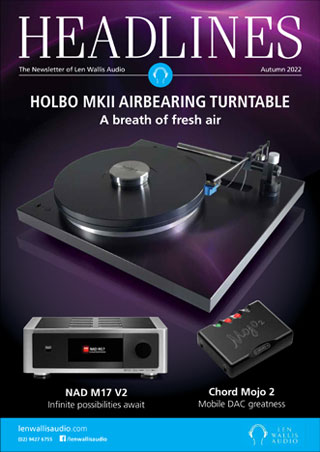From the desk of Len Wallis
i can recall a bygone era when specifications were meaningful. They were poured over by enthusiasts, and heavily scrutinised by reviewers. Then along came Home Theatre and any semblance of honest comparison went the way of the dinosaur.
For example, checking the specs on the Australian website for Yamaha’s RX-A550 receiver shows that it is rated at 60 watts/channel, with two channels driven, or 115 watts/channel if only driving one channel. But this is a Home Theatre receiver — surely it will be driven with five speakers? Plus this figure is into a 6-ohm load, while traditionally power ratings are into 8-ohm loads, which will be lower.
But then re-checking, this time on the US Yamaha site, the same receiver is rated at 80 watts with two channels driven – this time into 8 ohms, which (in theory at least) should be less than the 6-ohm rating given above.
Interestingly enough, in the reviews that I have been able to dig up so far on this receiver, none of them actually measured the power ratings. One did, however, compare it to a 110-watt rated alternative, and commented that they thought the Yamaha sounded ‘the least stressed when we ramped up the volume’ – something we would usually associate with a more powerful receiver. Incidentally, the Yamaha reviewed very well!
This criticism is by no means aimed at Yamaha. All manufacturers appear to play the same game, and Yamaha is more honest than most. All the Yamaha ratings above are ‘measured’ at 20Hz to 20kHz, which is the universally accepted standard. However I have found some receivers where the rating is given at 40Hz to 20kHz, which will look more impressive, but is unrealistic in a real-world situation, particularly when using the system to play music. Worse still, many manufacturers specify their power ratings at 1kHz with one channel running, a completely useless figure.
The problem arises from the fact that when running one or two channels a certain demand is put on the power transformer in the unit. As the number of channels being used increases, this demand is increased, the power available for the two front channels is reduced, reducing in turn the power output.
Of great importance is the quality of the transformer itself. While researching this I came across an article where an A/V receiver specified at 88 watts/channel (one channel driven) on test delivered 28 watts/ channel (x 5) when used under real-life conditions. In the same article another product rated at 155 watts/channel (again one-channel driven) delivered 111 watts/channel under real-life conditions, a much closer finding.
So where does this leave the consumer? Unfortunately up the proverbial creek. All you can rely on is your ears, and the advice from your dealer – make sure it is a reputable one!




